Last week a Greenwich 18-year-old’s heroin overdose topped headlines.
Art Romano, Deputy Director of GEMS, said a dose of Narcan was administered to the 18-year-old, who survived.
A Glenville man, 37, with a history of drug convictions is being held on narcotics charges in connection to the incident.

DEA website
Romano, who has been with GEMS for 21 years, said that in the first 10 months of 2014, GEMS had administered Narcan 26 times, reviving people from overdoses of heroin as well as a range of opiate-based narcotics.
“It could be someone’s Vicodin prescription, which can be legitimately prescribed,” Romano said of Narcan’s use. “We employ it judiciously where we suspect an opiate overdose. It works very well. We get a prompt response, and some of these people are not breathing at all.”
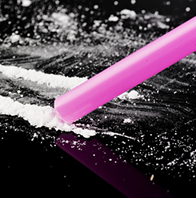
DEA website
Romano said GEMS has been carrying Narcan on its ambulances for over 20 years. “It’s not a new drug,” he said, though recent legislation has made it more readily available to police and the lay public.
While talk has turned to heroin, Greenwich Free Press also interviewed Greenwich Police Lieutenant Kraig Gray; GHS Health teacher Kathy Steiner; and Ginger Katz whose son died of a heroin overdose in 1996 at the age of 20. All were asked what they would say about drugs to parents of middle and high school age teens. All cited mixed messages and an attitude of permissiveness as a variable contributing to the problem.
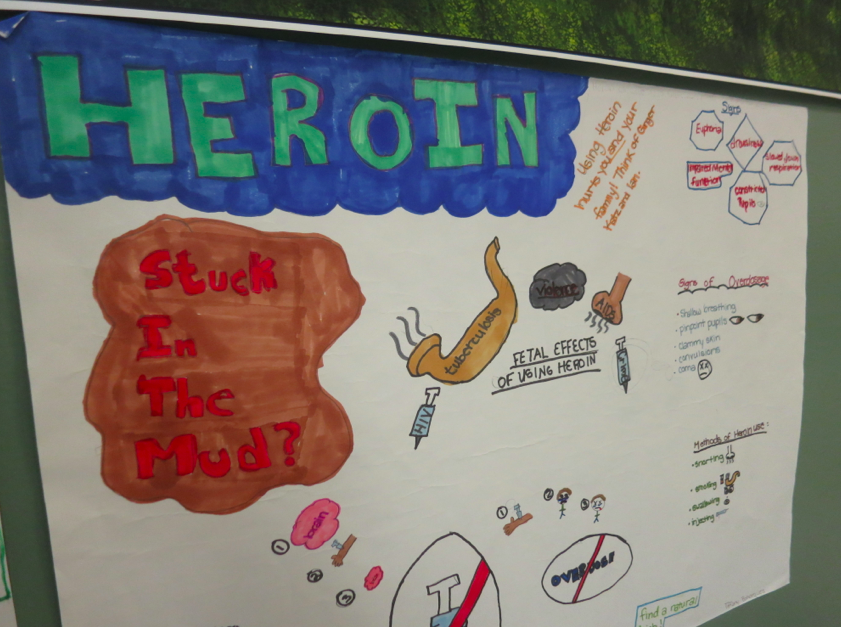 Marijuana and Alcohol
Marijuana and Alcohol
Lt. Gray said in Greenwich experimentation often begins in 9th grade.
Katz said for Ian drug use started with a sip of beer and a puff of pot in 8th grade. During college, Ian got hooked on heroin.
“You don’t know if your kid is going to have an addictive personality,” Katz pointed out.
Katz, who runs a support group for families who have lost children, said there are two sets of parents who contact her. Some have lost a child. Others have a child who is using. “I always ask them, ‘What did your kid start with and at what age?'” Katz said. She said the response is usually that it started during middle school years.
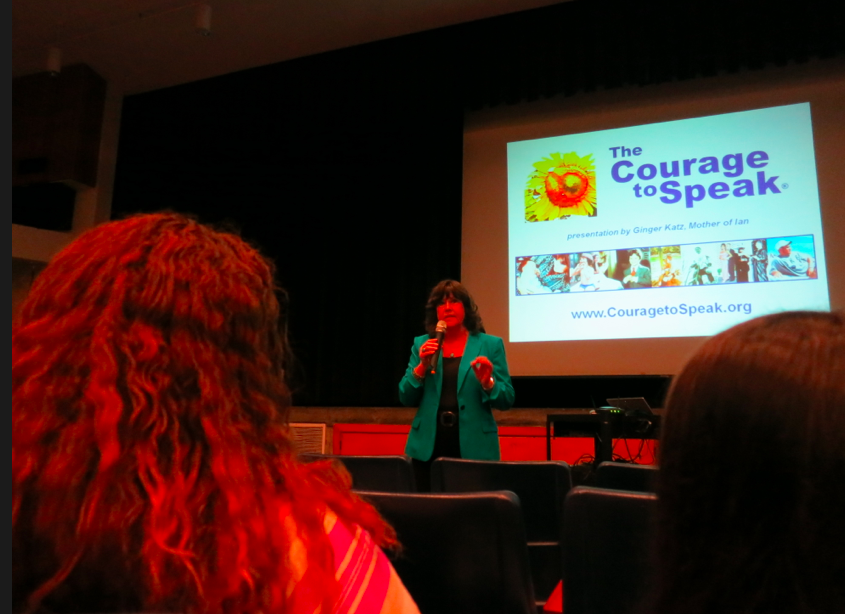
Ginger Kats spoke at GHS last spring. The name of her foundation, “The Courage to Speak,” sums up her approach to her son’s death from a heroin overdose. Katz insists it’s critical for parents to talk to their children about drugs. Credit: Leslie Yager
“Pot is more available now and it wreaks havoc on families when an 11-, 12- or 13- year old doesn’t think it’s harmful,” Katz said. “They’re seduced because they’re getting mixed messages and because people are passing legislation to legalize it.”
Statistically speaking, Katz’s observations ring true. According to CRC Health Group young people aged 12 to17 have constituted about two-thirds of the new users of marijuana in recent years.
Also, Katz said many parents are unaware that the marijuana is much stronger than what they may remember. According to the University of Mississippi Potency Project, the average percentage of THC in marijuana was about 1% in 1975, roughly 3% in the 90s, and rose to 6.4% in 2003.
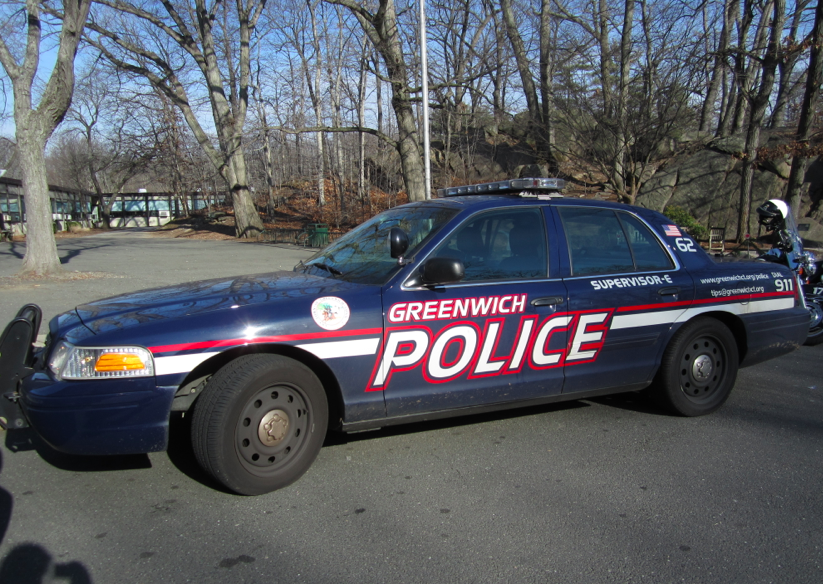 “Young people are showing less disapproval of marijuana use and decreased perception that marijuana is dangerous,” according to the National Institute of Drug Abuse. According to NIDA, in 2013, 7% of 8th graders, 18% of 10th graders, and 22.7% of 12th graders used marijuana in the previous month.
“Young people are showing less disapproval of marijuana use and decreased perception that marijuana is dangerous,” according to the National Institute of Drug Abuse. According to NIDA, in 2013, 7% of 8th graders, 18% of 10th graders, and 22.7% of 12th graders used marijuana in the previous month.
“Marijuana interferes with neurological development and injures the brain more in the long term that kids understand,” said Romano of GEMS.
Indeed, a recent study published The Journal of Neuroscience shows that size and shape of two brain regions involved in emotion and motivation may differ in young adults who smoke marijuana once a week.
A recent Northwestern University study of young adults who used marijuana only recreationally showed significant abnormalities in two key brain regions important for emotion and motivation.
“If you never smoke pot, you’ll probably not try heroin,” said Greenwich Police Lt. Kraig Gray, who said kids in Town often begin experimenting around 9th grade.
Lt. Gray said that teens whose parents are not actively involved have more opportunity to experiment, and, given 24/7 access to the internet, they learn about drugs online from other teens. Gray said teens don’t jump into heroin, but may ease into it in a climate of permissiveness among parents and society.
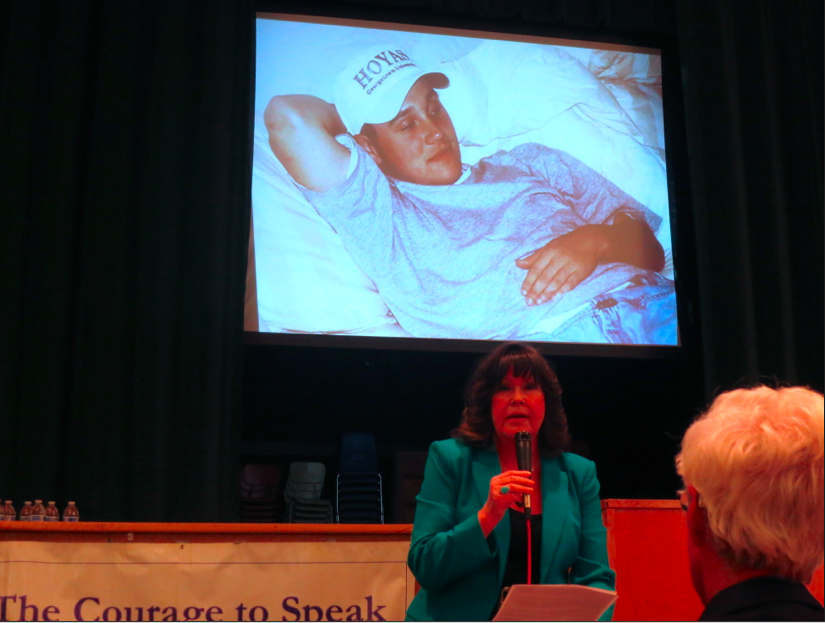
Ginger Katz founded Courage to Speak Foundation after her son Ian died of a heroin overdose at the age of 20. She visited GHS last spring and shared Ian’s photo taken not long before he died. Credit: Leslie Yager
When she addresses middle schoolers and high schoolers, Katz, who founded The Courage to Speak Foundation, always encourages them to get help, to find at least three to five adults they can trust to tell their secrets to.
Like Katz, GHS health teacher Kathy Steiner emphasizes the importance of frank, open conversations about drugs and addiction.
Recently Steiner screened the film, ‘The Anonymous People,’ which has the theme that recovery is something to celebrate and that for too long shame about addiction kept people from seeking treatment.
“Recovery is something to talk about, something to celebrate,” Steiner said, adding that there are walks and fundraisers for other diseases. “We have to talk about addiction as a disease that deserves empathy, just like other diseases. We need to erase the stigma.” Steiner points out that when a drug addict relapses and goes into the hospital they need services just like a sick person with diabetes or another disease.
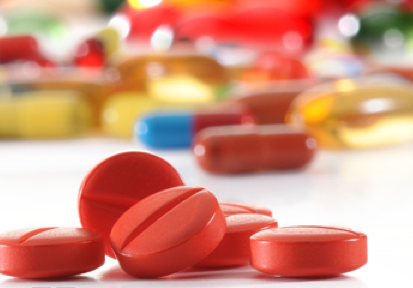
DEA website
“Kids have to know they can talk about their disease,” said Steiner. “When kids come out of rehab they are thrown back into the same environment and nobody talks about the disease of addiction.”
Lt. Gray said said teens who experiment with alcohol and marijuana may later experiment with ‘shrooms and “Molly.”
“Just because you smoke marijuana doesn’t mean you’ll do heroin, but I don’t know many people who go straight to heroin.” – Lt. Kraig Gray, Greenwich Police
“If you are the parent of a child who smokes you should be more concerned about them transitioning to a harder drug than a parent of a child who doesn’t use any intoxicant,” Gray said.
“Addiction wreaks havoc on families,” Katz said. “With kids around 11, 12, or 13 the kids really don’t think pot is harmful. They’re seduced because they are getting mixed messages.”
Addiction can also take a significant financial toll on families, Katz said. Putting the costs in context, she said Ian’s college tuition was $30,000 a year, the same as a single month in rehab.
Sending even a responsible young teen to a party where there is alcohol or pot — even if they don’t partake — puts them at risk of the behavior of others. “Especially for girls,” Katz said.
Whereas in the 1970s and 1980s, heroin wasn’t as pure as today and had to be injected, and needles came with a stigma. These days heroin can be snorted or inhaled. It is also cheap and accessible.
“Three kids in Ian’s dorm were offered heroin one night. One got scared. One got sick. Ian got hooked.” – Ginger Katz of Courage to Speak Foundation
Specifically, Gray said teens face peer pressure and often they learn about drugs on the Internet. But, like Romano, Lt. Gray circles back to alcohol, and cautions parents against the attitude that it’s alright for teens to drink. “Referring to a subculture of permissiveness of both society and parents.
Given that marijuana is still illegal and it is illegal to drink alcohol until the age of 21, Gray said, “The message that it’s alright to break the law sets a precedent, allowing one illegal drug can creep into consumption of another intoxicant.”
“Shrooms… (Hallucinogenic mushrooms), Molly,” he said of the next likely round of experimenting. “Then Oxy,” he said. “What’s Okay,” Lt. Gray asked. “Where is the line drawn?”
“It’s here from back country all the way down to the water,” Gray said, referring to teens and drugs. Gray, who described alcohol as the original date rape drug, said, “It dulls the senses. It effects systems differently.”
Alcohol: Pre-gaming
“From our point of view the number one drug they’re using is alcohol. Middle school aged kids and young high school age kids can drink to such excess that it becomes a true medical emergency,” Romano said. “It can be life threatening.”
“They’ll try to drink huge volumes in a quick period of time to travel to where they’re going, and have their own ‘good time,'” Romano said, adding that teens aren’t aware they lack the metabolism to absorb a large amount of alcohol. “That’s our number one worry.”

Subscribe to the daily Greenwich Free Press newsletter.
Romano said, People lose inhibitions even worse when they are drunk. “There are males who take advantage of women, especially in college. It happens in high school too,” Romano said, adding that GEMS gets a call when there is an assault.
On a positive note Romano said the “don’t-drink-and-drive message” seems to have sunk in. But, he said, “There are instances of driving under the influence of mixes of drugs.
 “They won’t drink but they’ll smoke marijuana and think that’s not going to effect how they do things,” he said, though GEMS doesn’t become involved until someone can’t take care of themselves. For example, GEMS might treat an intoxicated person after an assault or rape, or maybe the person is unconscious.
“They won’t drink but they’ll smoke marijuana and think that’s not going to effect how they do things,” he said, though GEMS doesn’t become involved until someone can’t take care of themselves. For example, GEMS might treat an intoxicated person after an assault or rape, or maybe the person is unconscious.
Romano said GEMS gets the results of the toxicology screens which often show a mix of marijuana, plus a prescription drug. “It happens not every day, but episodically,” Romano said. “Prescription drug abuse in our segment of the population is right up there after alcohol.”
“And heroin, though present, is not epidemic in middle school or high school, but we do have it in Greenwich,” Romano said. “It’s mostly used by older teens and young adults.”
Next on Greenwich Free Press, look for an interview with Candace Lightner, founder of MADD — Mother’s Against Drunk Driving who is now the president of We Save Lives.
Related Stories:
- Greenwich Man Faces Drug Charges Stemming from Overdose of Local 18-Year-Old
- Recovery is Something to Celebrate in Greenwich
- Why Do Kids Use Drugs? GHS Guest Speaker Asks Tough Question
- GHS Grad Breaks Silence on Drugs from Marijuana to Heroin
- Heroin: The Elephant in the Room?
- Talk Turns to Heroin in Norwalk

Email news tips to Greenwich Free Press editor [email protected]
Like us on Facebook
Subscribe to the daily Greenwich Free Press newsletter.
Sources:
National Institute on Drug Abuse
National Institute on Drug Abuse
Drug Enforcement Administration
Recovery Happens Counseling Services